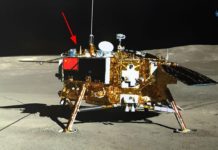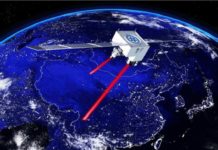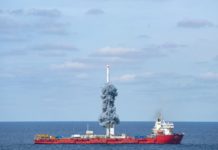Undoubtedly the most important figure in China’s space programme, Qian Xuesen (also spelt Tsien Hsue-shen) was responsible for directing the development of China’s missiles and launch vehicles from 1956 to 1991.
Born in 1911 in Hangzhou, China, Qian led a controversial life and passed away in 2009 in Beijing. He has the distinction of being one of few people honoured by both China and the U.S. for his contributions to science – Qian had a major part to play in the formation of both NASA’s Jet Propulsion Lab (JPL) and China’s Fifth Academy of the National Defense Ministry, which is known today as the China Aerospace Science and Technology Corporation (CASC). It can be argued that no other individual has contributed more to the space programmes of two major powers, with the exception of Wernher von Braun.
A brilliant man and a favourite student of renowned scientist Theodore von Kármán, Qian’s career as a scientist became turbulent when he found himself drawn into the politics of the era. From anti-communist McCarthyism in the U.S. to the Cultural Revolution in China, Qian found out the hard way that science can be a political tool. To survive, he had to combine hard science with the art of politics, and ended up propagating ludicrous theories which some Chinese commentators have called “insane”.
Birth and early life
Born into a family of traditional Mandarins, Qian’s father was a refined civil servant who gave his son a modern, scientific education whilst exposing him to music, art and literature. Always the top of his class, he graduated with a degree in Mechanical Engineering from the Shanghai Jiao Tong University, in hopes of becoming a railroad engineer to aid in the modernisation and defense of China.
Later on, during the Japanese invasion of Manchuria in 1931 and the Shanghai Incident on 28 January 1932, Qian became convinced that air power was even more necessary than railroads, and turned his attention to aeronautical engineering. The limited resources in China, combined with the political turmoil of the time, prompted him to apply for the Boxer Indemnity Scholarship, which gave him the opportunity to study in the U.S., at MIT, in 1935.
Working at Caltech and MIT
After a year at MIT, he earned his Masters Degree with a thesis on the boundary layer on aircraft wings, and furthered his studies in Caltech under Theodore von Kármán. Here, he developed an interest in rockets after meeting Frank Malina and Jack Parsons, who have become important figures in the history of the U.S. space program.
Malina and Parsons were both part of the Guggenheim Aeronautical Laboratory (GALCIT) headed by von Kármán. The group was an amateur, experimental one, working on developing small rockets and wind tunnels. In 1937, Qian joined them and participated in hazardous rocketry experiments, earning the group the nickname “The Suicide Squad”.
The group’s achievements are notable, and paved the way for military use of aerospace technology. For example, the Suicide Squad produced groundbreaking technical papers, in which Qian was responsible for precise mathematical calculations and equations. In 1943, the group proposed the creation of a “Jet Propulsion Laboratory”, to the U.S. army, for the purpose of developing more powerful rockets.
From this time onwards, Qian busied himself with research papers, teaching at Caltech, and was recruited to advise the U.S. government on top-secret military projects, for which he was given security clearance. Between 1946-1949, he taught at MIT, made his first trip back to China, got married, and returned to the U.S. In 1949, he once again joined Caltech to become the Robert H. Goddard Professor of Jet Propulsion at Caltech, and applied for U.S. citizenship, which he was denied.
Allegations of Communism
Thus far, Qian’s life had been stable and peaceful, barring the situation back home in China; by 1949, World War 2 had just ended, and was experiencing a civil war between the Republican Kuomintang government and the Communists. By early 1949, shortly before the Communist People’s Republic of China (PRC) was established, it was clear that the Kuomintang would lose the war.
By then, the U.S. government was suspicious that Qian was a Communist; he was observed to have attended gatherings organised by Caltech physicist and suspected Communist Sidney Weinbaum, who had immigrated to the U.S. from Russia. Qian himself was unaware of Weinbaum’s political leanings, and had openly stated that he did not believe in Communism even though he was a patriot to the Chinese people.
In 1950, Qian’s security clearance was revoked and he was jailed for 2 weeks, which made him declare that he wanted to go back to China. As he packed and made preparations to leave the U.S., his situation was being hotly debated by Caltech, along with various U.S. government bodies, on whether he should be deported or kept in the country.
During this time, he was not allowed to leave, especially because some of his China-bound cargo were documents marked “Confidential”. From 1951-1955 he was kept under house arrest, and spent his time writing a Engineering Cybernetics, a groundbreaking book on complex control systems.
Return to China: The Chinese space programme
In 1955, a secret deal was made between the U.S. and the PRC, in which Qian was exchanged for a group of 11 Americans held hostage in China. Finally allowed to leave, Qian resigned from Caltech and made his way to China in September 1955, aboard the SS President Cleveland.
Earlier in 1955, PRC Chairman Mao Zedong had announced his decision to begin a Chinese nuclear programme, for which missiles were needed. In 1956, shortly after Qian’s homecoming, the Fifth Academy of the National Defense Ministry (the Fifth Academy for short) was established, which was responsible for missile research. Qian was made Director of the Fifth Academy. A year later, in 1957, he became an Academician at the Chinese Academy of Sciences and its first Director of the Institute of Mechanics, where he headed the development of the Silkworm missile.
Because of the lack of knowledge and resources in China, Qian spent much of his time educating Chinese scientists and technical staff on the basics of spaceflight and rocketry. He also participated in the ongoing technology transfer programme from the Soviet Union, believing that this would accelerate the Chinese missile programme, although initially intending to develop indigenous missiles. Meanwhile, because of the shortage of hardware and materials in China, he suggested modifying the Soviet R-2 to reduce manufacturing costs. His input led to the concurrent development of two launches; one with an R-2 filled with China-made fuel, and another, with an indigenously-made R-2 copy. Both missiles were known as Dong Feng 1 (DF-1) and were launched in 1960.
In 1957, Qian persuaded Mao Zedong of the importance of launching satellites, in addition to building missiles. Mao then initiated Project 581, an ambitious plan to launch one within a year, which was later scrapped and renamed Project 651. Under this project, China launched its first satellite, Dong Fang Hong 1, in 1970. Qian was also very keen on establishing a manned space programme for China and spent the later part of his career pushing for one; it is reported that he eagerly viewed China’s first manned mission in 2003 from a hospital bed.
Politics, Qigong and Cults
Although Qian is best known for leading China’s space programme, he also gained notoriety in China for indirectly causing the Great Chinese Famine (1958-1961). It has been said that a scientific paper published by Qian, in which he argued that it was feasible to dramatically increase agricultural output and steel production, drove Mao to implement disastrous policies during The Great Leap Forward. These policies, along with droughts and floods, led to the deaths of between 15 million and 45 million Chinese within the three years.
Some have speculated that Qian was ordered by the Chinese government to write such papers. Regardless, Qian was careful to toe the party line throughout his career, and by doing so, stay out of trouble. He remained unscathed during the Cultural Revolution, and later publicly supported the government during the Tiananmen Square incident.
In the 80s and 90s, Qian also became a vocal proponent of the ancient Chinese exercise qigong– some say his support of qiqong led to the formation of the Falun Gong, a spiritual organization banned in China. Purportedly, Qian spent the last decades of his life dabbling in conspiracy theories, ESP, and forms of pseudoscience and spiritualism, which he has been criticized for.
Conclusion
After McCarthyism had blown over, there was a consensus that Qian was never a Communist. In 1979, he was awarded Caltech’s Distinguished Alumni Award in 1979, and was later invited to speak at the American Institute of Aeronautics and Astronautics. However, since entering China in 1955, he adamantly refused to travel to the U.S. He passed away on 31 October 2009, at age 98.







